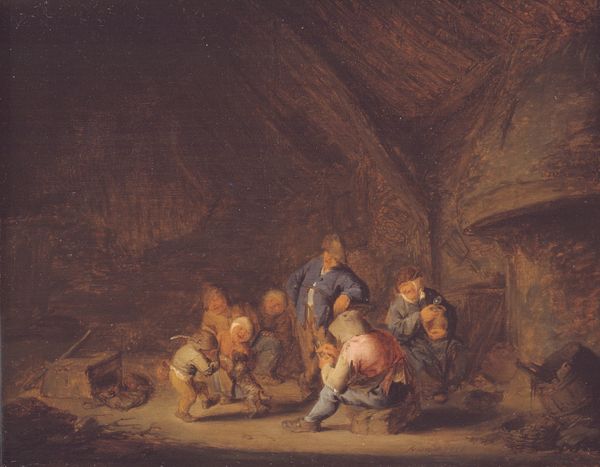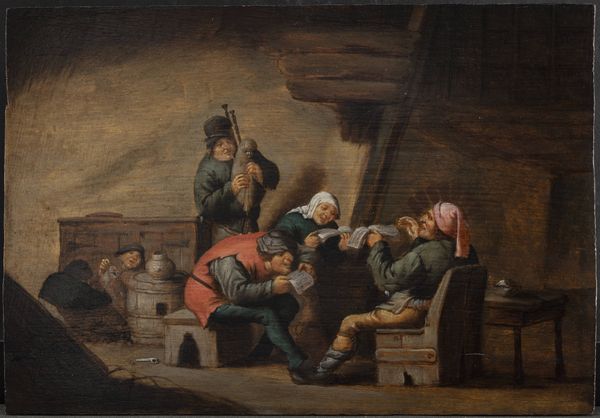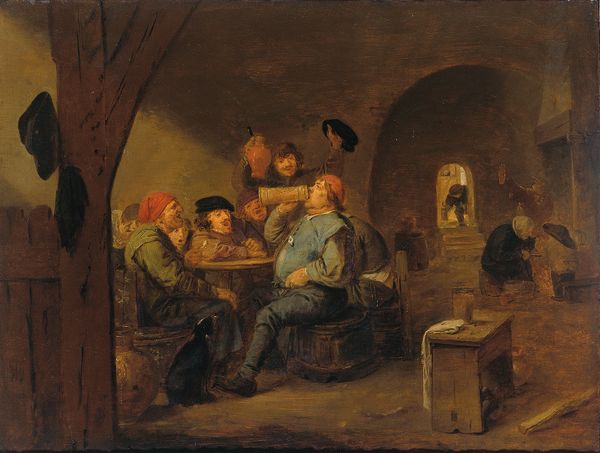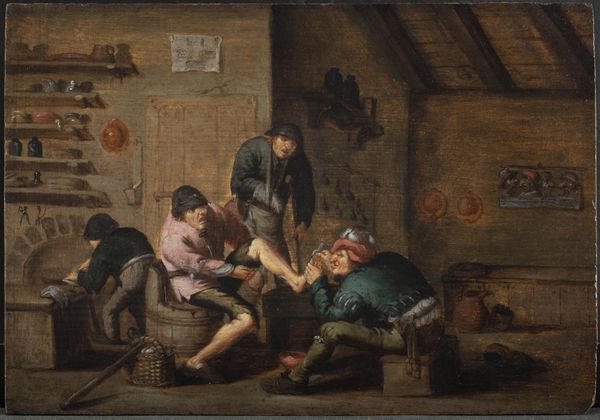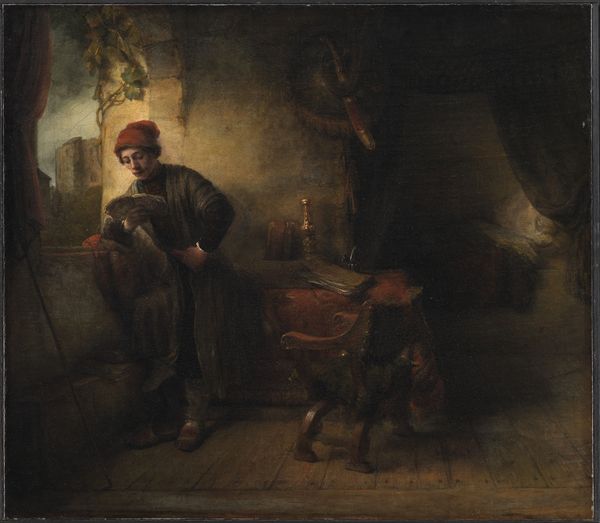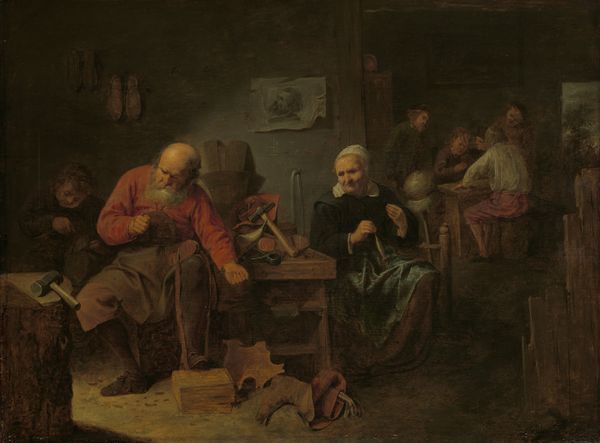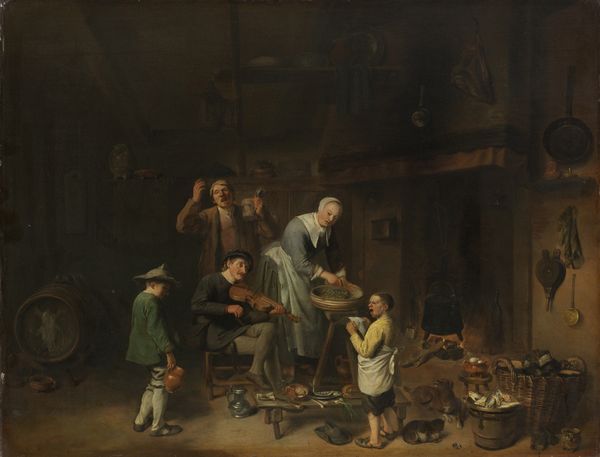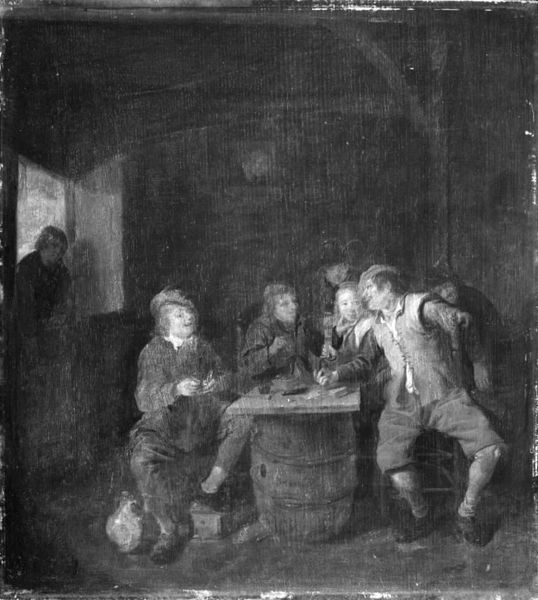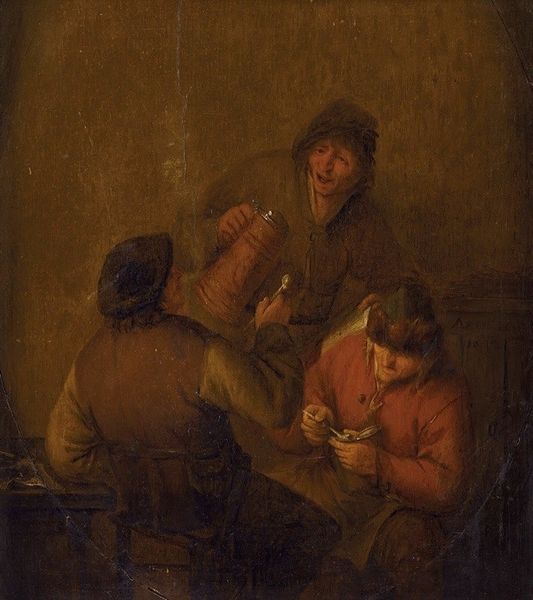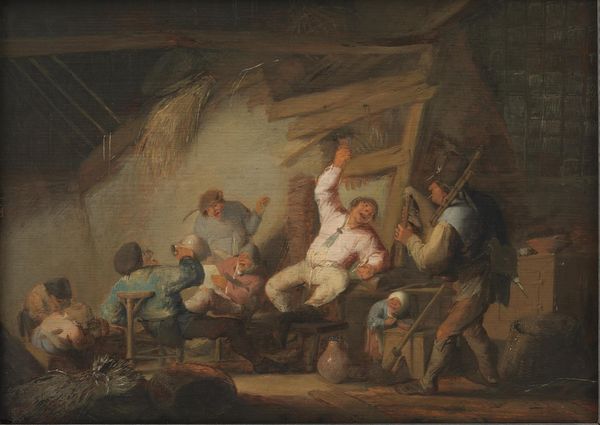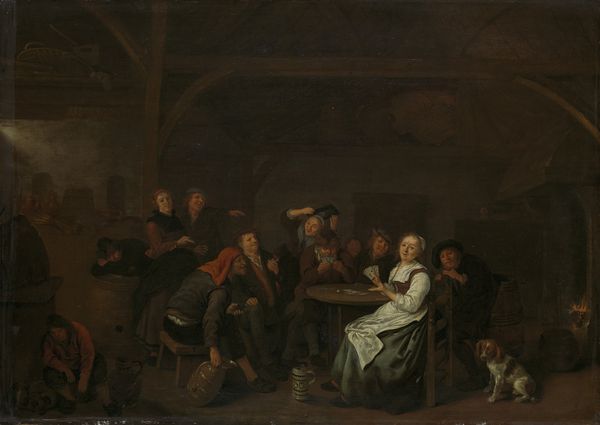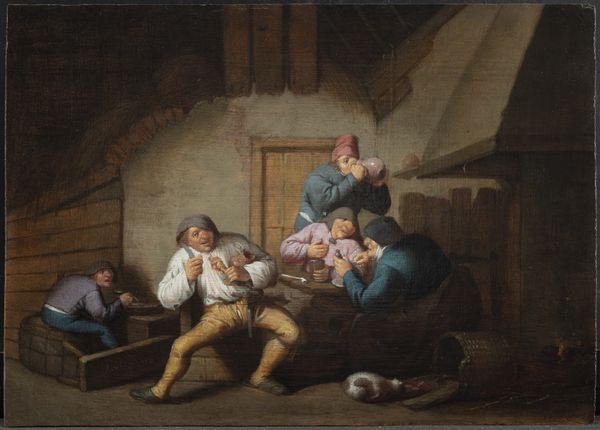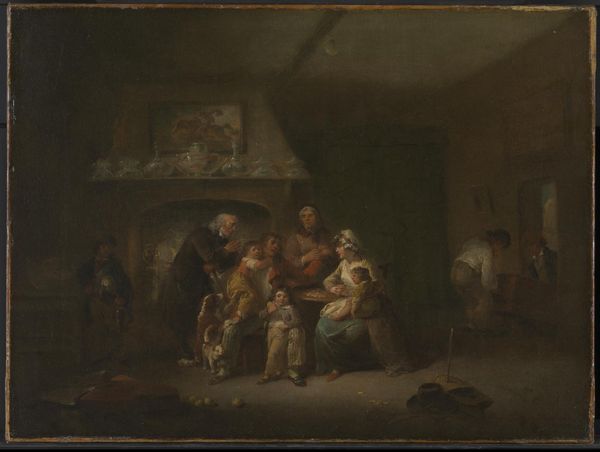
painting, oil-paint
#
baroque
#
dutch-golden-age
#
painting
#
oil-paint
#
figuration
#
oil painting
#
genre-painting
#
realism
Dimensions: height 12.3 cm, width 17 cm, depth 6.8 cm
Copyright: Rijks Museum: Open Domain
Editor: Here we have Pieter Hermansz. Verelst's oil painting, "Peasants Drinking in a Barn," dating from around 1628 to 1650. It feels like a dimly lit, intimate scene. I’m curious, what’s your take on this genre painting? What do you see here? Curator: This piece, at first glance, offers a glimpse into 17th-century Dutch life, but I think it pushes us to consider how "genre painting" can reflect broader social dynamics. I’m interested in the representation of these figures and how their portrayal might speak to contemporary anxieties or power structures. How are we implicated in its display of the labouring classes? Does this representation, rendered through oil paint, perpetuate or challenge stereotypes? Editor: I hadn't considered the social commentary aspect. It just seemed like a snapshot of everyday life, perhaps even idealized. The loose brushwork feels more documentary than pointed. Curator: Exactly, the “snapshot” impression is key. Dutch Golden Age paintings of this sort gained prominence at a moment of immense economic development coupled with the enduring power of class hierarchy. The ‘realism’ can operate ideologically. How are the individuals depicted here – what are their clothes like, where are they positioned relative to each other, and does any of this evoke for you any associations? Editor: Well, some appear poorer than others; that one on the left seems fairly dishevelled with tattered clothes. Perhaps the painting then offers more than just an interior scene... perhaps something more poignant? Curator: Precisely. Genre scenes weren't just innocent observations. They actively participated in constructing narratives around class, labor, and morality. Understanding that gives us a more critical perspective on art history and its relationship to power. Editor: This has definitely changed my perspective. I thought I was seeing an informal snapshot, but it's much more loaded. Curator: And hopefully prompts further questioning of seemingly simple art historical accounts. Editor: Absolutely. Thank you. I’ll definitely carry this with me in future museum visits.
Comments
No comments
Be the first to comment and join the conversation on the ultimate creative platform.
